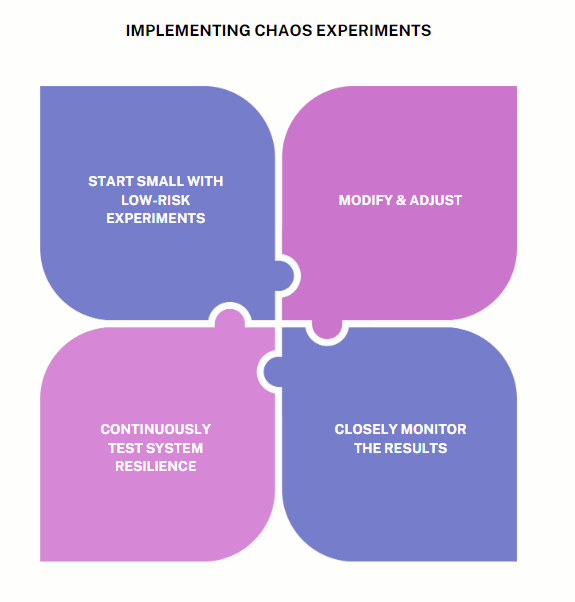As a product manager, you need a way to test the resilience of your product. You can accomplish this within your development workflows by injecting failures into the system and observing how it responds. The response then helps you identify weaknesses in the product before it impacts actual users.

This approach to product development is called chaos engineering. Keep reading to learn the basics, steps for its implementation, key tools, and best practices.
What is chaos engineering?
Chaos engineering is the practice of deliberately introducing failures into a system. You do this to test its resilience and identify hidden weaknesses. Chaos engineering also helps:
- To identify potential points of failure before they impact actual end-users
- Let product teams build more robust products
- Ensure system stability for fewer disruptions and a better user experience
- Provide product managers with data-driven insights to prioritize improvements
Best practices for chaos experiments
As a product manager, chaos experiments let you observe how the system behaves under stress. You play a key role in conducting these experiments. Try to implement the following best practices:

- Start small and begin with low-risk experiments. For example, simulating minor failures to understand the system’s response
- Integrate chaos experiments into your CI/CD pipeline to continuously test system resilience
- Closely monitor the results of chaos experiments and use the insights to inform future development and prioritization
When you lead a well-planned chaos experiment, the identification of potential weaknesses becomes fairly easy.
It’s important for you to leverage the right tools and frameworks for chaos experiments. When used correctly they can simulate failures and also help you monitor system responses. Some of the most common ones include:
- Gremlin is a comprehensive platform that allows you to run controlled chaos experiments across your infrastructure and applications
- Chaos Monkey is a tool developed by Netflix. It randomly disables production instances to test system resilience
- LitmusChaos is another open-source framework. It helps teams run chaos experiments in Kubernetes environments
Case study of chaos engineering
Netflix pioneered the practice of chaos engineering with its Chaos Monkey tool. Netflix uses Chaos Monkey and other tools from its Simian Army suite to randomly disable production instances. It helps the company identify and address potential weaknesses in its streaming service.
The unorthodox but useful approach has significantly improved Netflix’s system resilience. The users experience minimal disruption even during unexpected failures. Netflix truly embraced chaos engineering and has successfully set a benchmark for other companies to follow.
Key takeaways
When implementing chaos engineering, make sure that you have a strategic approach. Without a plan, chaos engineering can be hard to pull off.
The following key pointers will prove useful for daily reference:
- Start with controlled experiments on a small scale
- Cross-team collaboration is key
- Prioritize monitoring and continuous learning
- Overcome resistance to change by using a data-driven approach
- Manage the risk of disruptions strategically
Comment with any questions and come back for the next article!
Featured image source: IconScout